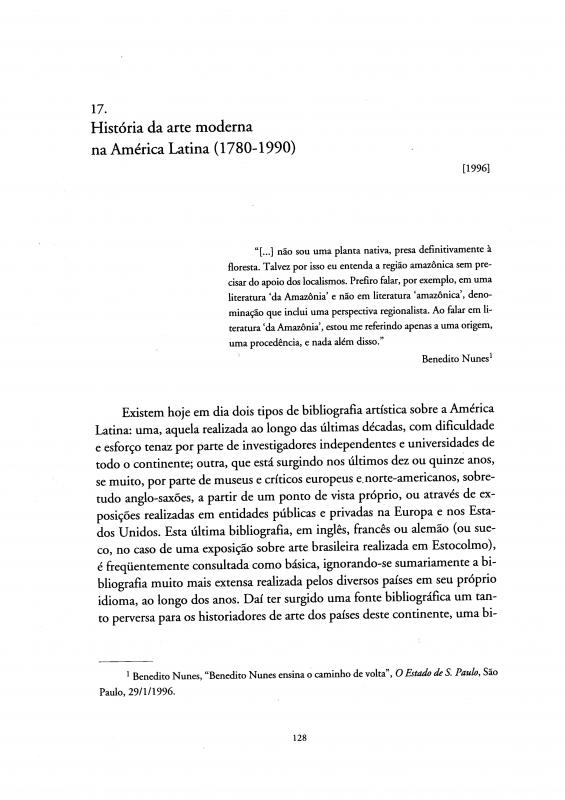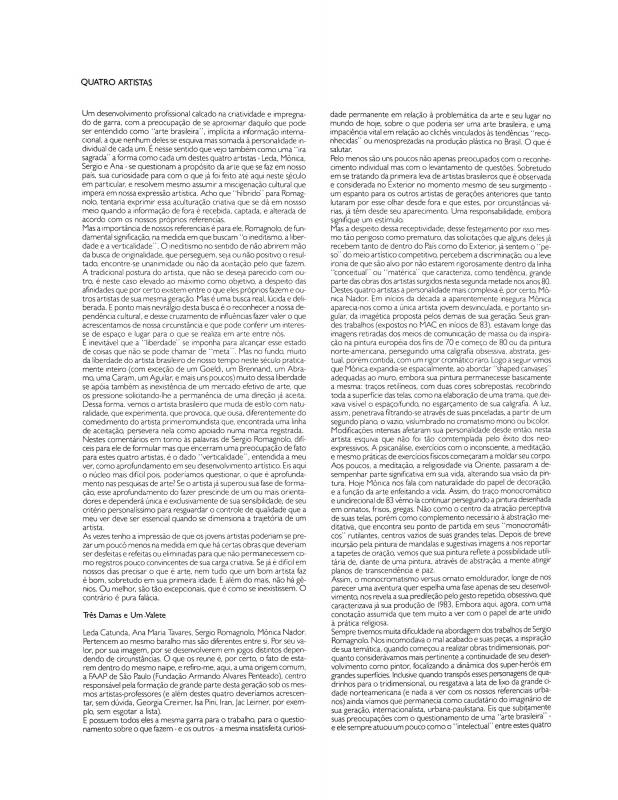Aracy A. Amaral (b. 1930) is an art historian and critic. Since 1975, her work has revolved around Latin American art. She took part in the Austin symposium in Texas where she came into contact with Latin American critics like Argentine Damián C. Bayón (1915−95), who organized the event, Juan Acha (1916−95), a Peruvian critic who lived in Mexico, and Marta Traba (1923−83), an Argentine critic originally based in Colombia. Following Amaral’s contact with those intellectuals, the problems of “identity” and “the artisanal” became central to much of her writing. In her view, the notion of “the new” is steeped in the need for self-affirmation; she argues that it is closely tied to the issues of “the national,” “the popular,” and “internationalism” [see doc. no. 776159]. In other texts, Amaral recognizes the formation of a collective identity as well as the “hybrid” nature of the various cultures at play when “the popular” and “the erudite” come together (see “Projeto de trabalho: História da arte moderna na América Latina” [doc. no. 776227], and “Quatro artistas” [doc. no. 1110458]). The exhibition O popular como matriz was held at the Museu de Arte Contemporânea at the Universidade de São Paulo in 1985. The show was curated by Aracy Amaral, the director of the museum at the time. This text is of great interest because it discusses how Brazilian artists appropriated images from popular and traditional local cultures at a moment when art criticism was largely focused on the internationalism influencing young artists. The originality of Amaral’s curatorial vision lay in presenting artists from distant regions of Brazil, that is, places far from major cities. The text dedicates a fair amount of space, for example, to Emmanuel Nassar, an artist who lived in Belém do Pará at the mouth of the Amazon River; his hybrid work combines craft influences with Pop art.



